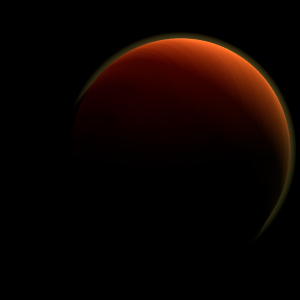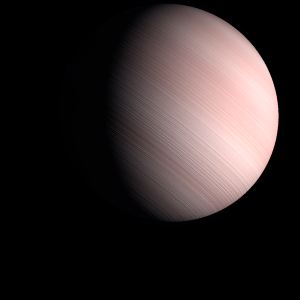It looks like you're using an Ad Blocker.
Please white-list or disable AboveTopSecret.com in your ad-blocking tool.
Thank you.
Some features of ATS will be disabled while you continue to use an ad-blocker.
4
share:
This star that has being discovered in 2010 by the W.M Keck Observatory and say that this star has remarkable signatures as described by Nature, in
2010.
I don't think to see this video before or in any MSN, maybe I'm wrong but anyway two Astronomers made a five-year observation video. As this didn't catch the News as far as I know, I made compilation video from only a small short video. It's fantastic to see a direct video of distant alien star 129 light years away.
Nature ( 2010)
After five years they made this striking observation and recorded the Star HR 8799 for this period of 5 years. Resulting in a beautiful first-time video of a distant Alien star 129 light years away from Earth.
Made possible by scientists: Jason Wang and Cristian Marios
W.M Keck Oservatory
I don't think to see this video before or in any MSN, maybe I'm wrong but anyway two Astronomers made a five-year observation video. As this didn't catch the News as far as I know, I made compilation video from only a small short video. It's fantastic to see a direct video of distant alien star 129 light years away.
Exoplanets cast doubt on astronomical theories Astronomers who study how planets form are scratching their heads after two studies have shown that all is not as theory would predict in the world of other-worldly worlds. How planets are born Christian Marois has posted the first challenge, an astronomer from the Herzberg Institute of Astrophysics in Victoria, Canada, and his colleagues, who used the Keck II telescope on Mauna Kea in Hawaii to spot a fourth planet in the star system HR 8799, some 39 parsecs (129 light years) away from Earth1. The planet, HR 8799e, is a gas giant rather like Jupiter, but about ten times as massive — similar to the other three planets in the system, which Marois discovered in 2008. It sits relatively close to its star, at 14.5 astronomical units (AU; one AU is the average distance between Earth and our Sun. Saturn is some 9.5 AU from our Sun, and Uranus is at a distance of some 19.6 AU). The other planets in the HR 8799 system are 24, 38 and 68 AU from their star, respectively."
Nature ( 2010)
After five years they made this striking observation and recorded the Star HR 8799 for this period of 5 years. Resulting in a beautiful first-time video of a distant Alien star 129 light years away from Earth.
Made possible by scientists: Jason Wang and Cristian Marios
W.M Keck Oservatory
edit on 0b57America/ChicagoSat, 28 Jan 2017 03:02:57 -0600vAmerica/ChicagoSat,
28 Jan 2017 03:02:57 -06001 by 0bserver1 because: (no reason given)
edit on 0b00America/ChicagoSat, 28 Jan 2017 03:04:00
-0600vAmerica/ChicagoSat, 28 Jan 2017 03:04:00 -06001 by 0bserver1 because: (no reason given)
It will be interesting to see what Phage has to say about this! Looking forward to it!
Pretty amazing to see planets orbiting its star in a completely different system, light years away from us. We don't get that kind of view even in our
own Solar System.
Here are the artist's impressions of the planets (in order from star):
HR 8799 e

HR 8799 d

HR 8799 c

HR 8799 b

They're all gas giants, larger and more massive than Jupiter.
Here are the artist's impressions of the planets (in order from star):
HR 8799 e

HR 8799 d

HR 8799 c

HR 8799 b

They're all gas giants, larger and more massive than Jupiter.
a reply to: wildespace
Those are nice artistic renderings. Love to do that too. The stars and everything in outer space give the inspiration to create and be aware that we are so small and short in time one has to absorb as much as we can absorb and project what we know or how it would look like. Because we can't go there yet, but we want too.
Those are nice artistic renderings. Love to do that too. The stars and everything in outer space give the inspiration to create and be aware that we are so small and short in time one has to absorb as much as we can absorb and project what we know or how it would look like. Because we can't go there yet, but we want too.
new topics
-
Are you ready for the return of Jesus Christ? Have you been cleansed by His blood?
Religion, Faith, And Theology: 1 hours ago -
Chronological time line of open source information
History: 3 hours ago -
A man of the people
Diseases and Pandemics: 4 hours ago -
Ramblings on DNA, blood, and Spirit.
Philosophy and Metaphysics: 4 hours ago -
4 plans of US elites to defeat Russia
New World Order: 6 hours ago -
Thousands Of Young Ukrainian Men Trying To Flee The Country To Avoid Conscription And The War
Other Current Events: 9 hours ago
top topics
-
Israeli Missile Strikes in Iran, Explosions in Syria + Iraq
World War Three: 13 hours ago, 17 flags -
Iran launches Retalliation Strike 4.18.24
World War Three: 12 hours ago, 6 flags -
Thousands Of Young Ukrainian Men Trying To Flee The Country To Avoid Conscription And The War
Other Current Events: 9 hours ago, 6 flags -
12 jurors selected in Trump criminal trial
US Political Madness: 12 hours ago, 4 flags -
4 plans of US elites to defeat Russia
New World Order: 6 hours ago, 2 flags -
A man of the people
Diseases and Pandemics: 4 hours ago, 2 flags -
Chronological time line of open source information
History: 3 hours ago, 2 flags -
Ramblings on DNA, blood, and Spirit.
Philosophy and Metaphysics: 4 hours ago, 1 flags -
Are you ready for the return of Jesus Christ? Have you been cleansed by His blood?
Religion, Faith, And Theology: 1 hours ago, 1 flags
active topics
-
4 plans of US elites to defeat Russia
New World Order • 26 • : WaESN -
Israeli Missile Strikes in Iran, Explosions in Syria + Iraq
World War Three • 68 • : cookalldafood -
ChatGPT Beatles songs about covid and masks
Science & Technology • 22 • : iaylyan -
The Acronym Game .. Pt.3
General Chit Chat • 7730 • : RAY1990 -
Biden--My Uncle Was Eaten By Cannibals
US Political Madness • 51 • : YourFaceAgain -
Are you ready for the return of Jesus Christ? Have you been cleansed by His blood?
Religion, Faith, And Theology • 8 • : RAY1990 -
Thousands Of Young Ukrainian Men Trying To Flee The Country To Avoid Conscription And The War
Other Current Events • 12 • : ScarletDarkness -
So I saw about 30 UFOs in formation last night.
Aliens and UFOs • 33 • : Encia22 -
Two Serious Crimes Committed by President JOE BIDEN that are Easy to Impeach Him For.
US Political Madness • 18 • : xuenchen -
12 jurors selected in Trump criminal trial
US Political Madness • 34 • : Vermilion
4
